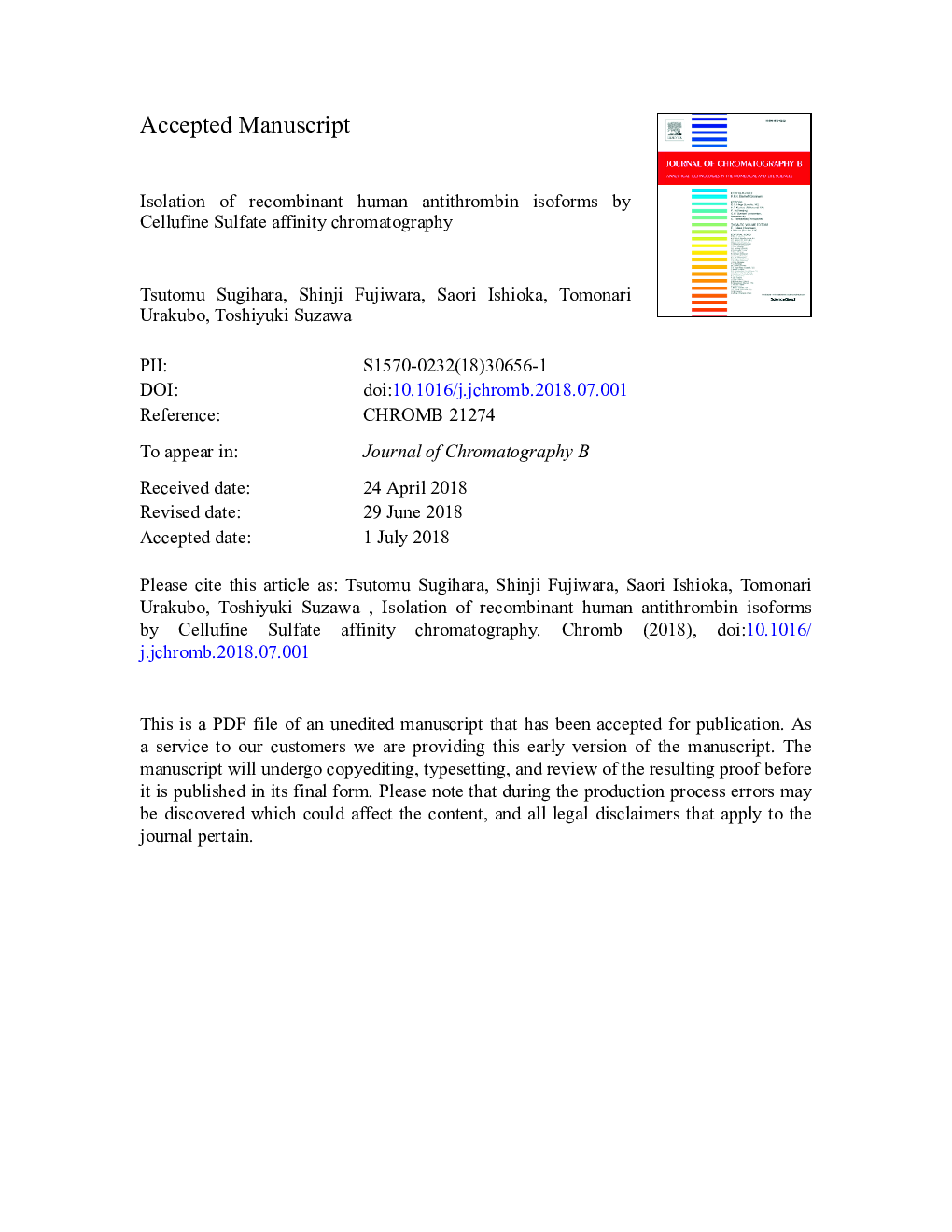| Article ID | Journal | Published Year | Pages | File Type |
|---|---|---|---|---|
| 7614830 | Journal of Chromatography B | 2018 | 23 Pages |
Abstract
Human antithrombin (hAT) is a major serine protease inhibitor that regulates blood coagulation in human plasma, and it has been applied for the treatment of antithrombin (AT) deficiency and disseminated intravascular coagulation (DIC). In the past, hAT for therapeutic use has been obtained from human plasma; however, hAT can now be sourced from transgenic animals and Chinese hamster ovary (CHO) cells by recombinant technology. The dominant form of hAT in plasma is the α form, which is glycosylated with four oligosaccharides and sialylated at its terminals. However, it would be preferable to remove the poorly sialylated α form of hAT, the minor β form with unoccupied glycosylation sites, and the inactive forms. Cellufine Sulfate, a heparin-mimic affinity resin made of cellulose and modified with sulfate groups, has an affinity for heparin-binding proteins and can be used in cation exchange chromatography. Based on these properties, the α and β forms of hAT could be separated and purified depending on the rate of sialylation. Consequently, Cellufine Sulfate was used to enrich the highly sialylated α form with a considerably higher step yield than that obtained using conventional heparin-immobilized resins. Furthermore, subsequent hydrophobic interaction chromatography could eliminate the inactive forms. These results suggested that Cellufine Sulfate was more effective than heparin-immobilized resins in purifying the highly sialylated α form of hAT for therapeutic applications.
Keywords
Related Topics
Physical Sciences and Engineering
Chemistry
Analytical Chemistry
Authors
Tsutomu Sugihara, Shinji Fujiwara, Saori Ishioka, Tomonari Urakubo, Toshiyuki Suzawa,
